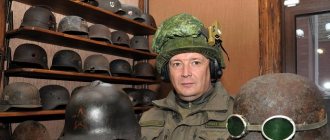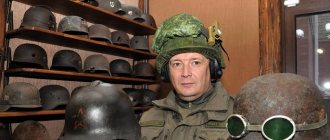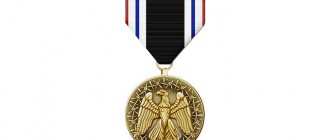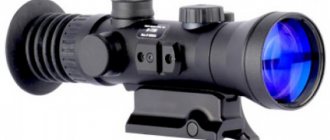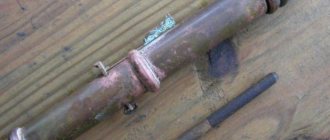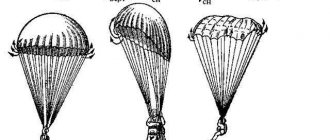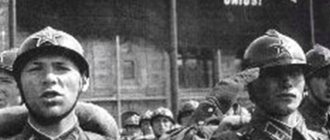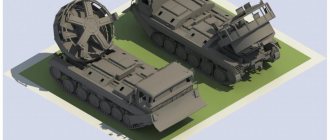Even in ancient times, warriors used special steel helmets to protect their heads. They were used by the legionnaires of Julius Caesar, the Scythians, and medieval knights in Europe. The steel helmet was also widely used in Kievan Rus, where it was represented by a wide variety of types.
Nowadays, headgear that protects during battles is no longer called a steel helmet. Today this name is not used. Modern helmets are known to consumers as hard hats. The military makes up the main percentage of all users of this type of hats. In addition to them, helmets are used by miners, construction workers, police officers, firefighters and participants in extreme sports.
How did the concept of “helmet” come about?
A special piece of clothing designed to protect a warrior’s head during battle was originally called a helmet. Since it was a continuation of the armor and was also made of iron, the military command included it in the standard combat kit under the official name “steel helmet” and recognized it as an effective means of individual protection for a fighter.
With the advent of various types of troops and the improvement of military craft, helmets began to be modernized. The products were dome-shaped. Steel was used to make them. But history knows examples made of felt and leather, the protective properties of which were ensured by a large number of metal elements attached to them. Due to the presence of these steel parts, the headdress was associated with iron. Over time, a more convenient word “casque” appeared in everyday life, which in Latin means “metal helmet.”
The most expensive helmets. Part six. Helmets of Alexander Nevsky
Do not think that rare and very expensive helmets have been and are found only abroad. And it is even more stupid to consider their findings as some kind of derogation of our Russian culture. Well, there was no Roman culture on our lands, the Romans did not reach here. That’s why there are no Roman helmets in our archaeological finds, even the most tasteless ones. They reached England, and they reached France. But again, they were not beyond the Rhine, so a clear boundary of the finds is fixed - the Rhine River - and here are the Romans, and here are the “wild Germans”. But after the baptism of Rus', its spiritual development went in the same direction as European civilization; the same swords from Europe appeared, but, of course, their own local products, which were no worse than Western and Scandinavian ones. And just the helmet of Prince Yaroslav Vsevolodovich is one of these products. This is an ancient Russian helmet, which dates back to the second half of the 12th - or the first half of the 13th century. It is located in the Armory Chamber of the Moscow Kremlin.
Russian soldiers had good costumes in the film “Alexander Nevsky”!
According to the typology of the Russian scientist A.N. Kirpichnikova belongs to type IV. He noted that the helmet of Yaroslav Vsevolodovich is one of the first finds, with which “the study of not only weapons, but also Russian antiquities in general began.”
A copy of the helmet of Yaroslav Vsevolodovich. (State Historical Museum, original in the Kremlin Armory in Moscow)
Well, we found it completely by accident, and quite a long time ago. It so happened that the peasant woman A. Larionova from the village of Lykova, located near the city of Yuryev-Podolsky in the fall of 1808, “while in the bush for pinching nuts, she saw something glowing in a hummock near a walnut bush.” It was a helmet lying on top of chain mail, and both it and the helmet itself were very rusty. The peasant woman took her find to the village elder, and he saw the holy image on the helmet and handed it over to the bishop. He, in turn, sent it to Alexander I himself, and he handed it over to the President of the Academy of Arts A.N. Olenin.
A.N. Olenin. He was the first to study the helmet, which is now officially called the “helmet from Lykovo”...
He began to study the helmet and suggested that the helmet along with the chain mail belonged to Yaroslav Vsevolodovich and was hidden by him during his flight from the site of the Battle of Lipitsa in 1216. He discovered the name Theodore on the helmet, and this was the name of Prince Yaroslav, given to him at baptism. And Olenin suggested that the prince took off both his chain mail and his helmet so that they would not interfere with his escape. After all, from the Laurentian Chronicle we know that Prince Yaroslav, when he was defeated, fled to Pereyaslavl, where he arrived only on the fifth horse, and drove four horses along the road. His brother Yuri was also in a hurry to escape from the battlefield, so much so that he arrived in Vladimir only on his fourth horse, and the chronicle emphasized that he was “in his first shirt, with his lining out.” That is, in only his underwear, the poor fellow, he galloped up, in such fear.
Unfortunately, the crown of the helmet was preserved in very poor condition - in the form of only two large fragments, which is why its exact shape, as well as its design, is impossible to determine. It is generally accepted that it had a shape close to ellipsoidal.
Drawing from a pre-revolutionary book about Russian antiquities...
On the outside, the surface of the helmet was covered with silver sheet and gilded silver plates, with chased images of the image of the Pantocrator, as well as Saints George, Basil and Theodore. The forehead plate bore the image of the Archangel Michael and the inscription: “Great Archangel Michael, help your servant Theodore.” The edge of the helmet is decorated with a gilded border covered with ornaments.
In general, we can talk about the high artistic skill of the manufacturers of this helmet, their technical skill and good taste. Pre-revolutionary Russian historians saw Norman motifs in its design, but Soviet historians preferred to compare them with the white stone carvings of the churches of the Vladimir-Suzdal land. Historian B.A. Kolchin believed that the crown of the helmet was solidly forged and made of iron or low-carbon steel using stamping, followed by a knockout, and this distinguished it from other similar products of that time. For some reason, the half-mask of the helmet covers part of the inscription made along the perimeter of the icon, which allows us to claim that at first it was not there, but was added later.
According to A.N. Kirpichnikov, this helmet was remade at least three times and that it had owners before Prince Yaroslav. Moreover, at first he might not have had any decorations. Then silver plates were riveted to it. And only after that his pommel and half mask were added to it.
Historian K.A. Zhukov notes that the helmet did not have lower cutouts for the eyes. But, in his opinion, the helmet was not altered, but was immediately made with a half mask. Author of the article “Helmet of Prince Yaroslav Vsevolodovich” N.V. Chebotarev points on it to the place where his forehead icon meets the half mask, and draws attention to the fact that for some reason it covers part of the inscription framing the icon, which, in general, should not be.
His drawing, made in pre-revolutionary times.
After all, if the helmet was made by one master and, so to speak, at the same time, then there is no doubt that then the inscription on the icon would correspond to its location. But it could also be that the half mask was temporarily removed from the helmet in order to fix the icon on it, as if its dimensions were not measured, and then “due to tradition” they hoped “at random”, they decided that ... “it will do.”
For some reason, Alexander has two helmets in the film. Moreover, he wears them during the action AT THE SAME TIME. The difference is that the second one has a half mask with a pointed nose attached! So to speak, he has a “more combative look.”
In any case, the shape of this helmet with a forehead icon and a half mask is reflected in art. It was this kind of helmet (and in two versions!) that director Sergei Eisenstein placed on the head of his hero in the feature film “Alexander Nevsky”. Sets of postcards with the image of Prince Alexander in this helmet were printed in thousands of copies, so it is not surprising that for a long time everyone thought that the “movie helmet” was made according to the model of a real one, although in fact this was not at all the case.
Turkish helmet from the early 17th century. from the Metropolitan Museum of Art in New York. Notice how much it resembles ancient Russian helmets. It is clear that this is not due to the fact that “Rus-Horde-Ataman Empire” (precisely “Ataman”, because “atamans”, that is, “military leaders”, that is, princes/khagans, are atamans!). This form is simply rational, that’s all. The Assyrians also had such helmets, and that they were also Slavs? And then to such helmets they added a visor, a “nasal arrow” that could be raised up and down, “earphones”, a back plate and it turned out... “Jericho hat” or as this helmet was called in the West - “eastern burgignot” (burgonet).
Western European burgonet in oriental style. End of the 16th century Made in Augsburg. Weight 1976 (Metropolitan Museum of Art, New York)
The second helmet, again attributed to Alexander Nevsky, is also an exhibit of the Kremlin Armory, and not just an exhibit, but one of the most famous and famous!
Officially, it is called the “Jericho Hat of Tsar Mikhail Fedorovich” - that is, that same Mikhail Romanov, who became the founder... of the royal house of the Romanovs. Why is it considered the helmet of the blessed prince Alexander Yaroslavich? It’s just that in the 19th century there was a legend that the helmet of Tsar Mikhail was a remake of the helmet of Alexander Nevsky. That's all!
Where this legend came from is not entirely clear. In any case, when the Great Coat of Arms of the Russian Empire was approved in 1857, its coat of arms was crowned with the image of the “helmet of Prince Alexander.”
However, it is quite obvious that this helmet could not have been made in Rus' in the 13th century. However, they could finally prove that it was made at the beginning of the 17th century only after the Great Patriotic War, when historians had the appropriate technology in their hands. That is, everything that in one way or another connects this helmet with the name of Alexander Nevsky is just a legend and nothing more.
Well, what this helmet actually is was described in detail by the candidate of historical sciences S. Akhmedov in the article “Helmet by Nikita Davydov.” In his opinion, this helmet is made in the Eastern tradition, although along with the Arabic inscription it also contains Orthodox symbols. By the way, very similar helmets are in the collection of the Metropolitan Museum of Art in New York and it is known for sure that they are... from Turkey!
In “Antiquities of the Russian State, Published by the Highest Command” (1853), from where the lithograph given here is taken, the following translation of the 13th Ayat 61 of Sura is given: “Help from God and imminent victory and bring [this] goodness to the faithful " 61 Surah is called Surah As-Saff (“Rows”). The Surah was revealed in Medina. It consists of 14 Ayats. At the very beginning of the Surah it is said that Allah is glorified both in heaven and on earth. And what he wants is for all those who believe in him to unite and become like one hand. In it, Musa and Isa brand the sons of Israel, declare them stubborn infidels and accuse them of wanting to extinguish the light of the faith of Allah. In the same sura, Allah promises to make his religion superior to all others, even if the pagan polytheists do not like this. At the very end of the Surah, believers are called upon to fight for faith in Allah, to defend his religion, so that they sacrifice their property and even their lives. And as an example, the apostles are given, who were followers of Isa, the son of Mariyam. Verse 13: One of the translations of this verse looks like this: “There will also be what you love: help from Allah and imminent victory. Tell the good news to the believers!”; “And the other thing you love: help from Allah and imminent victory. And give joy to the believers!”; “And for you, O believers, there is another mercy that you love: help from Allah and imminent victory, the benefits of which you will enjoy. Give joy, O Muhammad, to the believers with this reward!” And the question is, how could the Russian master Nikita Davydov make such a helmet (around 1621), and even being Orthodox, write on it in Arabic: “Please the faithful with the promise of help from Allah and an imminent victory”?
In the receipt and expenditure book of the Armory Prikaz dated December 18, 1621, there is the following entry: “The Sovereign’s salary from the Armory Prikaz to the self-made master Nikita Davydov was half a larshina (followed by a list of fabrics that must be given to the master), and the sovereign granted it to him because he and the crowns, I aimed both the targets and the ears with gold.” That is, he trimmed a certain helmet with gold, given to him for decoration, and for this he received payment in kind from the sovereign.
Drawings of a helmet from the book “Antiquities of the Russian State, Published by the Highest Command” (1853). Then this is how information about the cultural values of the Russian Empire was presented! Front, back view.
Side view.
That is, Nikita Davydov himself did not make it, but only decorated it. And it had to be decorated, because it was an obvious gift to the king from the East. It is possible that the gift is directly from the sovereign, which cannot be ignored. But how can you wear it if you are an Orthodox king, and quotes from the Koran are written on the helmet? There is no way to offend an Eastern ruler by refusing his gift. But also his subjects... they are like that... Grishka Otrepyev was recognized as an impostor because he did not sleep after dinner, did not like to go to the bathhouse, and was even embarrassed to say such a thing - “he loved fried veal.” And then there are the words from the book of “filthy” on the tsar’s head... The Orthodox people simply will not understand this, and they will also start a rebellion.
Notched decorations.
That’s why Nikita Danilov was invited to bring this helmet into “usable form.” So on the nose arrow of the helmet there was a miniature figurine of the Archangel Michael made of colored enamels. On the dome, the master “stuffed” golden crowns with the help of a notch, and at the very top, that is, on the top, he strengthened a golden cross. True, it has not survived, but it is known that it existed.
Inside view.
And this, by the way, is not the first time that weapons from the East have found new owners in Rus'. From the East, the sabers of Mstislavsky (his helmet, by the way, is also eastern, Turkish!), Minin and Pozharsky, which were stored in the same Armory and also contained oriental marks and inscriptions in Arabic script, came to Russia from the East.
P.S. That's how interesting things are in life. I wrote this material at the request of one of the regular VO readers. But in the process of work I came across a number of “interesting moments” that formed the basis for continuing the topic, so...
To be continued…
Construction of helmets
Wartime helmets have always been a subject for research by historians and archaeologists, who have thoroughly studied all the structural features and forms of soldier’s personal protective equipment, which have been widely used for thousands of years. Scientific research suggests that the main part of the protective helmet design has remained unchanged for many centuries. The changes affected only the form. It depended on the development of weapons and destructive weapons, from which it was obliged to protect.
Metal was used as a material for making helmets. These were thin sheets of bronze or copper, which were eventually replaced by steel or iron. It was helmets made of iron sheets that were used by all armies of the world until the 80s of the twentieth century. Later, military helmets and helmets began to be made from modern materials such as titanium, Kevlar, fabric polymers, and a compound of titanium and aluminum.
The internal structure of the helmet is represented by a special leather part, fastened with rivets around the circumference in the lower inner part of the product. This part of the helmet is called the “tuleyka”. It branches out using slits into several petals connected by a cord. The main functions performed by the crown and petals:
- ensuring a balanced fit of the helmet on the head;
- preventing head contact with the metal sheet of the helmet;
- softening the impact of fragments and stones on the outer part of the helmet.
Modern military helmets are more comfortable and safe for a soldier, since the petals contain additional foam or leather pads attached to them, enhancing the softness.
The master who forged the helmet: who is he?
Scientists have long debated who forged the helmet of Alexander Nevsky. The Arabic inscriptions seemed to indicate quite clearly its Eastern origins. But when it comes to history, you should never be so sure of anything.
In Rus', blacksmithing was quite developed; Slavic craftsmen often even taught this craft to representatives of various nations. Therefore, it is not surprising that Russian armor turned out to be very durable and skillfully made. But it was not customary to decorate them with Arabic script. And how could this be possible - after all, in the thirteenth century, the Tatar-Mongol yoke dominated Russia. Then why is the inscription on the helmet of Alexander Nevsky made in Arabic? Scientists have made several assumptions about this.
According to one of them, the helmet was a gift from the Khan of the Golden Horde to the Russian prince, symbolizing friendship and respect. Alexander Nevsky did not ignore the gift he received and wore it on every military campaign. It is likely that the helmet was created in Sarai-Batu, the capital of the Golden Horde. This version has a right to exist, because it has been proven that the khan’s warriors never killed skilled craftsmen. They remained to live in the capital of the Horde and produced simply real masterpieces of art. Foreign craftsmen made excellent jewelry, wonderful weapons and, of course, armor.
If we adhere to this version, then only one question arises - why does the helmet of Alexander Nevsky, made by Eastern craftsmen, contain Orthodox symbols? This is where scientists had to seriously rack their brains before they put forward a new hypothesis.
French helmet
Military operations in the First World War were of a trench nature. The targets were the soldiers' unprotected heads. Careless movement along the trench could result in serious injury or death. An uncovered head was a vulnerable spot for rifle or machine gun fire, shrapnel and landmines. For the first time in these years, the high efficiency of helmets was again remembered. By this time, the fashion for beautiful hats and shakos had passed, and helmets returned to service.
The French military was the first to be equipped with new, more advanced models. French products contained three elements: a cap, a skirt and a comb. “Adriana” is the official name these helmets received. Since 1915, the French military has been equipped with these protective products, which significantly reduced the losses of army personnel. Mortality decreased by 13% and the number of wounded decreased by 30%. During the First World War, French helmets were used by soldiers from England, Russia, Italy, Romania and Portugal.
The appearance of combat helmets in France
Until the outbreak of the First World War, soldiers of European countries did without protective helmets. The army abandoned armor long ago, so a helmet protecting the head was considered an element of ancient armor that had no place in the modern army. However, the First World War, which was unofficially called the “trench war,” showed that abandoning soldiers’ helmets was a rash decision.
Since it was necessary to stick out of the trenches, the soldiers’ heads were the first to feel how bad they felt without reliable protection. Most soldier deaths occurred from hits to the head. Seeing the monstrous losses of personnel that occur in war every day, the generals of European countries became seriously worried.
The first special-purpose helmets were developed in France. Before their appearance, French soldiers wore cloth caps, which could only protect their heads from bad weather. The first French helmet was called “Adriana” and began to be mass-produced already in 1915. It was not one-piece and consisted of the following parts:
- Cap;
- Comb;
- Skirts.
Immediately after the appearance of helmets, the losses of the French army decreased significantly. For example, the total number of wounded decreased by 30%, and those killed by 12-13%. It is worth considering the important fact that the French helmet was not intended to protect against bullets. He, of course, could ricochet a bullet that hit him along a lateral trajectory, but he could not withstand a direct hit. But shrapnel and fragments from grenades did not penetrate it.
Seeing the unexpected success in “reanimating” such a seemingly outdated element of protection as a helmet, the allied countries hastened to purchase huge quantities of “Adrian” for their armies. The following countries have purchased such protection:
- Russia;
- Romania;
- Italy;
- Portugal;
- Great Britain.
All of the above countries, except England, were very pleased with the protective properties of French helmets.
English helmet
The military leadership of England was not satisfied with the French “Hadrian” helmet. It was decided to create our own version of the military helmet. The developer of such a protective product was John Leopold Brodie, who took as a basis the medieval Capellin hat, widely used by the military in the period from the eleventh to the sixteenth centuries. The helmet was called the “steel helmet of the first modification” and was a one-piece stamped product with wide brims.
This helmet shape was very convenient for trench battles, since the brim created the effect of an umbrella for the soldier and protected him from shrapnel falling from above. But this model was inconvenient when it was necessary to attack, since it was placed very high on the head and did not protect the temporal and occipital parts of the head at all. But, despite this drawback, the English Brodie helmet was adopted by the armies of Canada, the United States of America and Australia.
"The Helmet of Ivan the Terrible"
The Royal Museum of Stockholm houses a combat helmet with the inscription “The Shelom of Prince Ivan Vasilievich.” In addition to this inscription, it is also decorated with Arabic-type script.
Researchers have long come to the conclusion that this script is an external imitation of Arabic script, but does not contain any meaning. True, not so long ago one researcher from Iran read this ligature as the words “Allah Muhammad” repeated seven times.
But what is really alarming about this helmet is the inscription “the helmet of Prince Ivan Vasilievich.” Even if the helmet was made for Ivan IV before he assumed the royal title (in 1547), then the Moscow sovereign was then called the Grand Duke. It is known how scrupulous the Moscow sovereigns were in designating their titles. The fact that “Ivan Vasilyevich” is simply titled prince, and not grand duke, has long aroused the suspicion of many researchers. They believe that this “helmet of Ivan the Terrible” is actually a 19th-century fake. In any case, there is no evidence of the attribution of “Prince Ivan Vasilievich” with the first Russian Tsar.
Therefore, let’s move on to the helmets stored in the Armory Chamber of the Moscow Kremlin, the identity of which is beyond doubt.
German version of the helmet
Unlike other countries, Germany until 1916 did not spend money on the production of, according to its experts, low-quality, low-grade helmets. Its gunsmiths in Hanover were engaged in the construction of truly high-quality products. In 1916, Germany saw the famous Stahihelm helmet, which later became a symbol of the German soldier, as it was used in two world wars.
The German helmet was significantly superior in comfort and protective qualities to the French and English models. A characteristic design feature of the Stahihelm helmet was the presence of steel horns in the temple areas. They performed several functions:
- provided cover for the ventilation holes in the helmet;
- carried out the fastening of a special armored shield that protects the head of a German soldier from direct hits from rifle and machine-gun bullets.
Despite the absence of flaws in design and shape, the German version of the helmet did not guarantee absolute safety of personnel. Although the helmets could withstand direct bullet hits, they did not ensure the safety of the soldier’s cervical vertebrae. The impacts hitting the helmet had such high energy that the cervical vertebrae were injured. And this, in turn, entailed death. The improvement of this situation was not influenced by the fact that the helmet itself calmly withstood the energy of impacts from direct hits.
Description of the helmet
The helmet of Alexander Nevsky, a photo of which can be seen on the pages of school history textbooks, has been kept in the Armory for many years. It constitutes one of its most precious treasures. And this item really looks very impressive. It dates approximately from the thirteenth century, but it is known that in the seventeenth centuries the helmet underwent some alteration and received additional decorations.
The helmet of Alexander Nevsky is made of reddish iron and has a semicircular shape. It is covered with gold and silver ornate patterns; the entire circumference of the helmet is decorated with precious stones and pearls. More than two hundred rubies, almost one hundred diamonds and ten emeralds were placed on it by a skilled court craftsman. On the nose of the helmet there is a lacquer miniature depicting the Archangel Michael, and royal crowns and an Orthodox cross are engraved around the perimeter. But this is not what makes the museum exhibit so unique; the whole mystery lies in the inscription written around the pointed top. Do you want to know what is written on the helmet of Alexander Nevsky? You will be very surprised, because the inscription is made in Arabic and contains a verse from the Koran. Why is there Arabic script on Alexander Nevsky's helmet? How could an Orthodox prince wear armor with inscriptions of infidels? Let's try to reveal this secret a little.
Military Soviet model
Alloy armor steel was used to produce helmets in the USSR. The Soviet model was called SSh-39 and was a product weighing 1.25 kg. The walls had a thickness of 1.9 mm. The helmet tests were carried out personally by S. M. Budyonny and gave good results. The Soviet model was capable of withstanding direct hits from a distance of ten meters from a Nagan revolver bullet.
In 1940, SSh-39 underwent modernization. The tulleka was equipped with additional belts, nets and linings. SSH-40 - this is the official name given to the improved helmet. Subsequent changes and innovations were made in 1954 and 1960. The result was the appearance of new helmets SSh-54 and SSh-60, changes in which affected only the tulleyka. The design itself has remained unchanged since 1939.
Orthodox-Islamic dual faith
Writer Alexey Bychkov in the book “Kievan Rus: a country that never existed?” expresses the original version. Orthodoxy and Islam have long been one religion (it is not for nothing that Muslims still revere Jesus Christ under the name of the prophet Isa) - “orthodoxy.” It divided quite late, in the middle of the 17th century (Raskol). Therefore, until that time, the Russians equally revered Allah, as evidenced, for example, by the crosses on the ancient Vladimir churches: these are crosses with a crescent.
This marginal version differs from the “alternative chronology” of Fomenko and Nosovsky primarily in that it fully recognizes the traditional chronology. But he claims that within its framework everything was somewhat different than we are used to thinking. One can dismiss such a hypothesis as absurdity. But what about, for example, the Arabic prayers to Allah in “Walking across the Three Seas” by Afanasy Nikitin? Obviously, the question of the relationship between medieval Russians and the Muslim world, about the Russian perception of Muslim culture and Islamic traditions, cannot yet be considered resolved by historians in full and without contradictions.
Improved model SS
Significant modifications to the SSh-39 were made in 1968. The shape of the helmet was subject to modernization. The Russian military model now had an increased slope of the frontal wall of the dome and shortened outwardly curved sides. For its manufacture, an armor alloy with greater strength was used. The slope of the frontal wall increased the resistance of the helmet against fragmentation hits.
China, North Korea, the Russian Federation, India and Vietnam use a similar helmet design to staff their personnel.
Some of the most effective military helmets used by Russian security forces are:
- SSH-68 M is intended for internal troops;
- The SSh-68 N is used by the Russian Armed Forces.
Both options have modern tuleykas. Despite the fact that these helmets weigh about two kilograms, they meet the first class of resistance, since they are able to withstand direct bullet hits from a Makarov pistol and shrapnel flying at a speed of 400 m/s, the mass of which does not exceed one gram.
Serious modernization of the Soviet helmet in 1968
Serious modernization of the SSh-39(40) occurred only in 1968. The new helmet was indeed thoroughly redesigned, and did not become another modernization of the SSh-39. The differences between the new model were the following nuances:
- The metal was replaced with a more durable armor alloy;
- The slope of the front wall has been increased;
- The sides have been shortened.
Currently, the SSh-68 is the main Russian protective helmet. In addition, protection of the same design is used by the armies of the CIS, China, India, Vietnam, North Korea and a number of other countries.
Although the SSh-68 does not quite correspond to the level of modern military helmets, the huge number of them in warehouses forces modernization to be made on its basis. This is how the following, more modern models appeared:
- SSh-68M;
- SSH-68N.
These modernizations received reinforcement of the structure from the inside with aramid and modern under-body devices. As a result, the weight of the new upgrades increased to 2 kg, but their strength increased significantly.
Modern Russian helmet
The STSh-81 “Sphere” helmet, since 1981, has been used to this day by the internal troops of the Russian Federation.
To produce its body, a titanium plate 0.3 cm thick was taken. The helmet weighs 2.3 kg and is used only for protection against mechanical injuries. Meets the second class, since it does not guarantee protection against firearms. The dome structure consists of three armored elements, which are contained in special cases.
The “Sphere” helmet has a “Sfera-P” modification, in which titanium armored plates were replaced with steel ones, which significantly increased the weight of the model (3.5 kg). A design flaw is considered to be the lack of integrity. Possible head injuries. Special cases with armored titanium or steel elements wear out quickly. This leads to their displacement and a decrease in the protective qualities of the helmet.
Helmet in Rus' - 800 years of continuous development
Home » Books on ancient history » Helmet in Rus' - 800 years of continuous development
Books on ancient history
boroda 07/14/2019 1294
24
in Favoritesin Favoritesfrom Favorites 9
A helmet is the main element of protective equipment for a warrior of any era, from the beginning of time to the present day. The head is the most vulnerable target for any type of blow, and at all times man has sought to protect it as best as possible. Of course, Rus' was no exception to this rule. The history of the development of the helmet in Rus' is a rather complex and complex topic, so today we will talk about the evolution of this armor as a whole.
Reconstruction of a Russian helmet of the Byzantine type.
Russian helmets have been known since the beginning of the history of ancient Rus'. At the initial stage of the existence of the Kyiv principality, military operations were carried out by infantry (a striking example is the campaigns of Svyatoslav in the 10th century). It is not surprising that the appearance of the Russian helmet of that era corresponded to the pan-European one. Having inherited its shape from the “Varangian”, the Russian helmet was a low-rise headband of a conical or spheroconical shape, almost always had an aventail (chain mail cloth) to protect the neck and often a nasal cap in the form of a vertical plate. Another common feature was the characteristic half mask that protected the upper part of the warrior’s face.
A typical helmet of the early Middle Ages. Used both in Western Europe and in Rus'.
With the development of statehood in Rus' and increasingly close contacts with its nomadic neighbors, the role of cavalry increased and a new type of combat was formed. Already by the 12th century, the Russian warrior was a heavily armed mounted spearman, and the shape of the helmet changed in accordance with this. Tall spheroconic helmets topped with a spire are becoming widespread. The nosepiece and half mask are used more and more often, and the aventail completely covers the warrior’s face and shoulders. Many helmets of this period were complemented by face masks.
Russian helmet with half mask, XII-XIII centuries
The next important event that influenced the development of the Russian helmet was the Mongol invasion of Rus'. The tactics of maneuverable equestrian combat have led to the fact that half masks and masks, which inevitably limit the warrior’s vision, lose their significance and disappear. It is interesting that in this case the circular aventail, which completely covers the face, remains, but the nosepiece is shortened. Now the helmet has a characteristic appearance, partly similar to the Mongolian one.
Helmet of a Russian warrior (Museum of the Battle of Kulikovo)
During the same period (starting from the middle of the 13th century), helmets with a smooth rim without nosepieces appeared. The helmet's dome is often faceted or grooved for greater protection from impacts.
The warrior on the right wears just such a helmet.
By the beginning of the 16th century, high helmets in Rus' occupied a dominant position. Their height could reach 30 cm or more, and the minimum metal thickness was 1.2-1.8 mm. In the 14th century, such helmets began to be supplemented with earflaps, and in the 15th century, with a visor and often with an arrow.
An example of a high Russian helmet from the early 16th century.
Such helmets provided maximum protection against impacts from above. However, they were vulnerable to side impacts. Therefore, already in the middle of the 16th century, low hemispherical helmets almost completely replaced them. Along with them, lightweight helmets - misyurki - are gaining popularity.
A bowl with aventail covering the face and ears, reinforced with butterfly plates.
The most widespread in the 16th-17th centuries were the so-called “iron hats” - lightweight hemispherical helmets. Earflaps and a visor are often added to them, and less often - an aventail and a nasal cap. Such helmets become the predominant type until armor is completely abandoned.
Chain mail and iron cap of the 17th century.
In this text, I deliberately omitted many details and did not mention less common types of helmets in order to analyze the long course of development of this type of protective equipment in Rus'. I will talk about each of the types of helmet mentioned here (as well as those that did not make it here) later.
Source - https://zen.yandex.ru/media/id/5c7166010c6e9900b4b2b890/shlem-na-rusi-800-let-nepreryvnogo-razvitiia-5d12defa45b00700af475dbd
